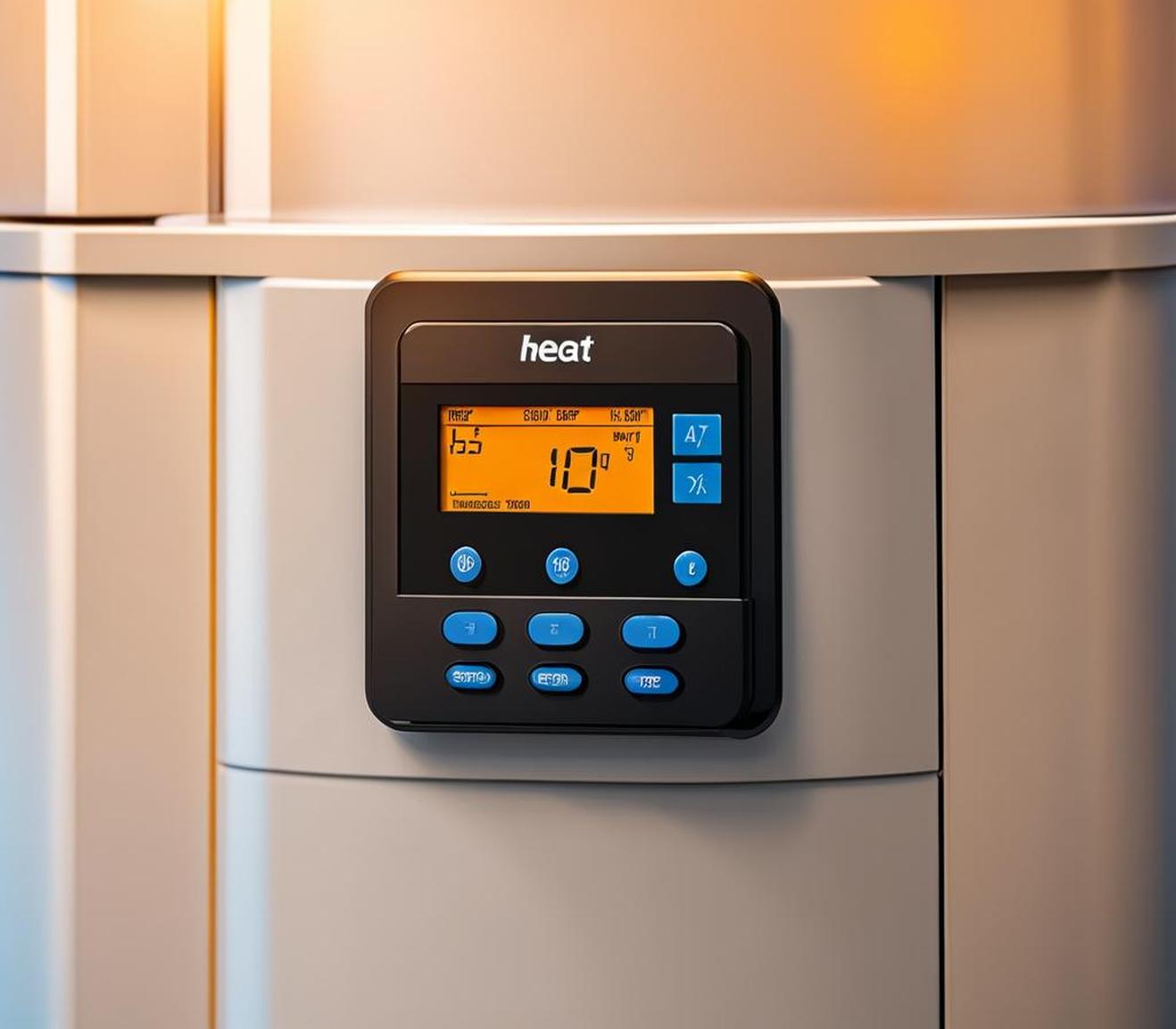Is your heat pump failing to keep your home cool during the dog days of summer? Before calling an HVAC technician, try pressing the reset button on the thermostat. This simple step often resolves minor operating glitches that prevent the heat pump from cooling properly. Resetting your unit is an easy DIY fix that can get your cooling back up and running in minutes.
We’ll also discuss what happens during the reset, additional tips for diagnosing issues, and when it’s time to enlist a professional.
Locating the Reset Button on Your Heat Pump Thermostat
The first step is finding the reset button on your particular thermostat model. It’s typically a small round button labeled “reset”, often located on the back or side. Older mechanical thermostats likely won’t have a reset button.

Digital programmable thermostats installed in the last 10-15 years generally include a reset function. Popular smart thermostat models like Ecobee, Nest, and Honeywell Lyric have reset buttons as well. Check your thermostat user manual for the exact location if you’re unsure.
Smart Thermostats
For smart WiFi-enabled thermostats, the reset button is usually on the back or side of the thermostat housing. Pressing it resets the software without altering WiFi connections. Refer to your model’s app or online instructions for step-by-step reset procedures.
Heat Pump Control Boards
Some heat pump brands also have an external control board with a reset button on the outdoor condenser unit. This resets the condenser only, not your thermostat. Locate this button near the Model/Serial # sticker.
When to Use the Reset Button
Resetting your heat pump can solve a variety of thermostat-related issues that prevent cooling. Common situations where you should try the reset button include:
- Stuck in heating mode – Unable to switch to cooling
- Unresponsive to temperature changes or buttons pressed
- Power outages that disrupt normal operation
- Error codes or odd behavior like temperature fluctuations
Resetting essentially reboots your system, deleting any customized settings and starting fresh. This restores proper communication between components. Keep in mind it will revert any programmed temperature schedules to the factory defaults.
Step-by-Step Guide to Resetting Your Heat Pump
Below are the basic steps for resetting most standard thermostats connected to a heat pump system:
- Turn off the thermostat completely.
- Locate the reset button, usually near wires on the back or side.
- Press and hold the reset button for 10-15 seconds until display goes blank.
- Turn thermostat back on – it may take several minutes to reboot and relaunch.
- Re-enter your desired heating/cooling schedules and settings.
Refer to your model’s manual for specific reset instructions. On smart thermostats, you may also be able to reset via the app or online dashboard. Just be sure to reprogram your custom schedules after resetting.
What Happens When You Reset Your Heat Pump
Pressing the reset button essentially reboots your entire heat pump system and thermostat. It erases any customized settings and starts from scratch. Here’s a rundown of what happens:
- Returns thermostat to original factory default settings
- Deletes programmed temperature schedules
- Clears any error codes or alarms
- May run system diagnostics or calibration
- Restores communication between components
Resetting your heat pump gives you a blank slate to reprogram the thermostat properly if errors or crashes occurred. Think of it as a fresh start for your cooling system.
Signs Your Heat Pump Needs Professional Service
While the reset button fixes simple software glitches, it won’t resolve mechanical or electrical problems. Call an HVAC technician if regular maintenance doesn’t improve the following issues:
- Low refrigerant levels
- Dirty filters or blocked airflow
- Electrical malfunctions
- Frozen evaporator coils
- Faulty thermistors or sensors
- Corroded wires or connections
- Leaky refrigerant lines
- Motor or compressor failure
Your technician can diagnose the specific problem and recommend repairs or replacement of damaged components. Don’t continue resetting a failing system in need of professional service.
Additional Troubleshooting Tips for Heat Pump Cooling
Before resetting your heat pump, try these basic troubleshooting steps to pinpoint the issue:
- Check air filter – Replace a dirty clogged filter
- Clean debris blocking outdoor unit airflow
- Ensure thermostat wiring is correct
- Lower thermostat temperature below room temp
- Inspect thermostat batteries if non-responsive
Also examine your heat pump manual for model-specific diagnostics. Some allow you to run system tests through the thermostat. Review error codes and descriptions to identify problems.
When to Call a Professional Technician
While the reset button can resolve minor software glitches, it’s not a fix for complex heat pump repairs. Contact a qualified HVAC technician if:
- Resetting your system does not restore cooling
- You’ve reset repeatedly with no improvement
- Error codes or strange readings appear
- The unit is over 10 years old
Professional technicians have specialized tools and expertise to accurately diagnose issues. They can recharge refrigerant, replace damaged components, and perform compressor repairs. Find a trusted local pro through reviews and referrals.
Pressing the reset button is an easy first step to troubleshoot heat pump cooling problems. Just be aware that repeatedly resetting a failing unit will not fix underlying mechanical or electrical faults. Schedule professional service if cooling issues persist after a reset. With some simple maintenance and resetting when needed, your heat pump can effectively keep your home cool and comfortable all season long.
